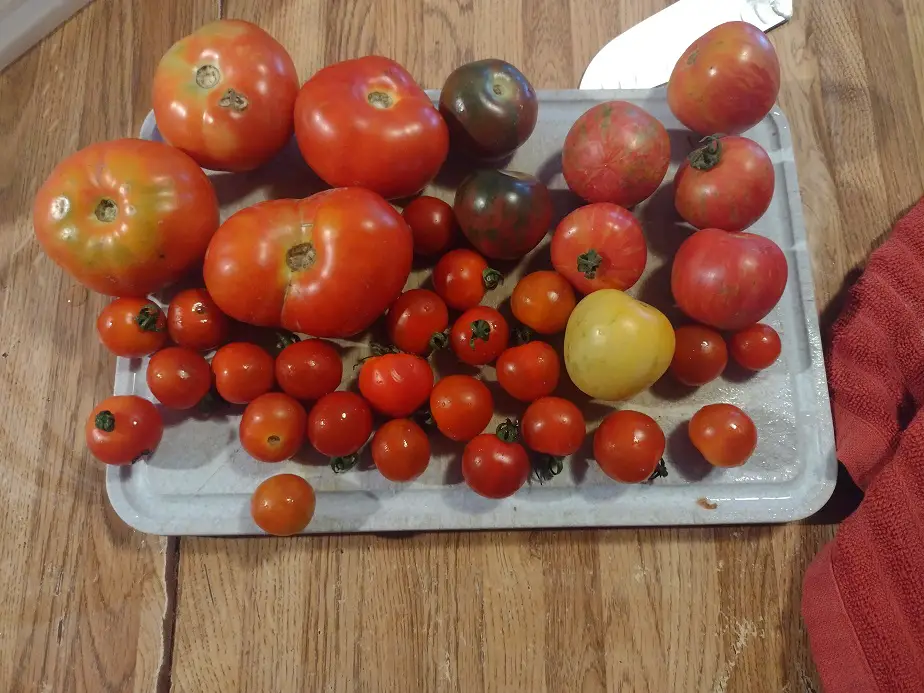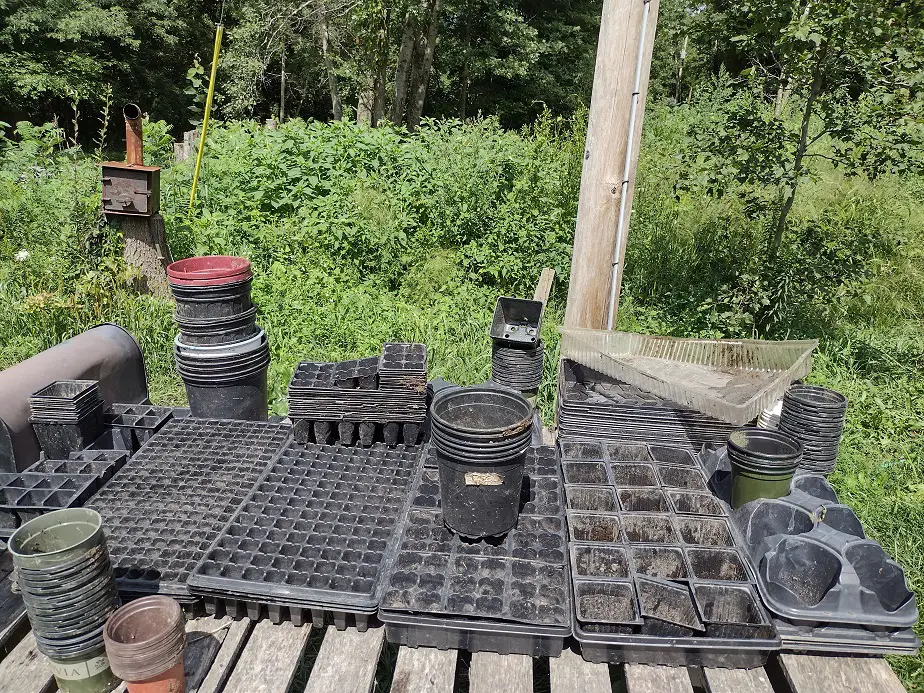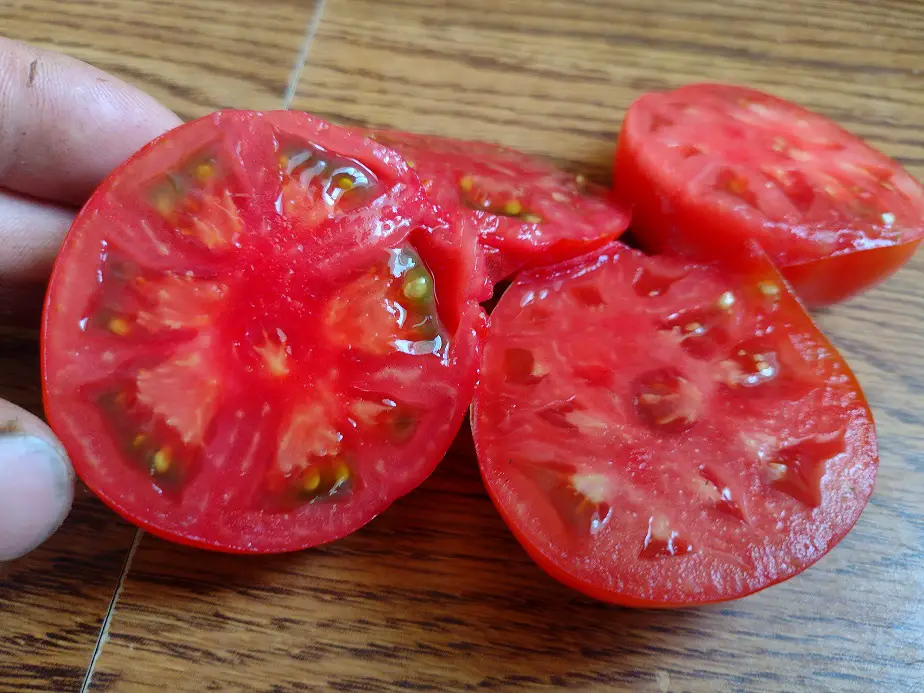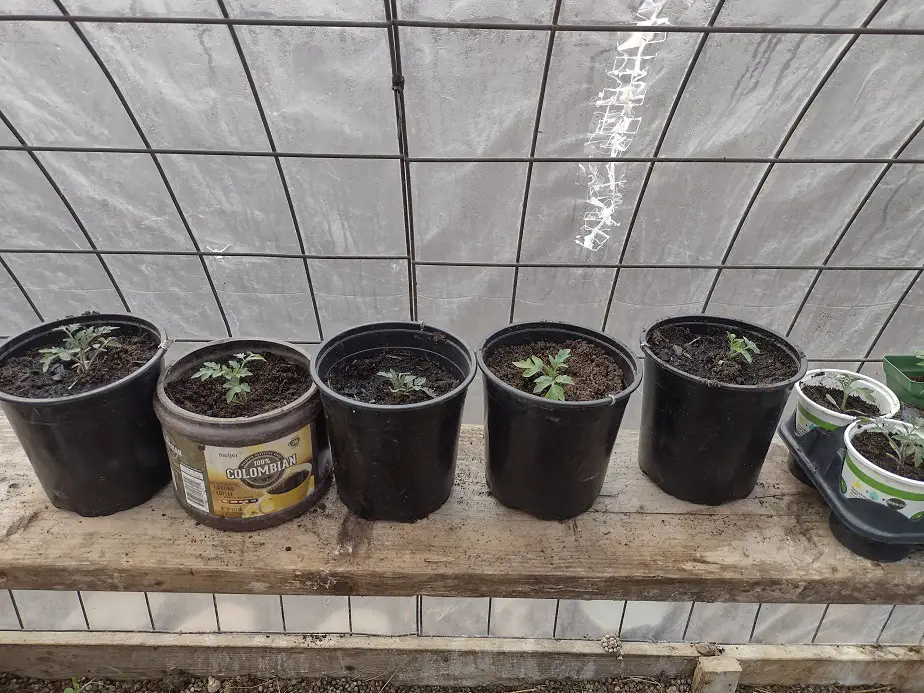Our small farm in west Michigan grows a ton of tomatoes.
For most of Michigan, transplant tomato plants June 1st and plant the seeds April 1st. Many people transplant tomatoes around Memorial Day but that can lead to frost damage. The plants grow faster if transplanted a week later when the soil has warmed up more.
Planting dates really depend on your location and what the weather is doing.
When is it Time to Plant Your Tomatoes?
Here in Michigan, I’d give you three separate planting regions. We have southern mitten, northern mitten, and the upper peninsula. In the southern half of the mitten, planting by memorial day is usually a good bet. In the northern mitten, planting June 5th is a pretty good bet. In the upper peninsula, plant no earlier than June 10th.
You really need to watch the weather for ideal planting conditions. Keep an eye out for frosts in the coming week. Even southern Michigan can get the occasional frost in early June. All it takes is the right wind from up north. a light frost usually kills young tomato plants and it’s quite a pain to cover them.
Keep an eye on the air temperature. When it’s consistently in the 70s during the day and 60s at night, and there’s no frost in sight, it’s time to plant. Another thing is looking at the soil temperature. I check the soil temperature about 2 or 3 inches deep with a meat thermometer.
What I want to see is 60 degrees all day. 60 degrees is the bare minimum for tomatoes to grow roots. In fact, they don’t do much until the soil actually hits 65. But, if the soil is 60, the weather is warm, and it’s getting warmer, the soil will be 65 in no time. We have a short season, get them in the ground.
Tomatoes are a warm weather crop and usually do better in near tropical environments than here in the cold north. Nun the less, we can still have a pretty good shot at growing good tomatoes if we’re smart and careful.
The first issue with growing tomatoes in Michigan is that most tomatoes take 90 to 100 days to get the first fruit. Realistically, most tomatoes are a 120 to 150 day crop if you want to get a full harvest out of them. Michigan has a fairly short growing season, so they need to be started early.
I plant between 200 and 500 tomato plants a year. They are started in seed trays between 1 and 2 months before the anticipated planting date. For me, I plant them out the first Saturday in June, so the seeds are started the first Saturday in April.

Tips for Seed Starting and Transplanting
Tomato seeds will not sprout in temperatures under 65 degrees. 70 is more ideal. I lose a lot more seedlings when I set the thermostat down to 65. That’s the hard part about sprouting seeds in the windowsill. That’s probably the coldest part of your house.
If you want to sprout seeds, a window may do but you have to monitor the temperature and keep the window very clean so it gets good light. I don’t have any good south facing windows with full sun, so I use grow lights. LED tube grow lights are affordable and easy on the electricity.
The cheap seed starting trays that you can get at Meijer of any hardware store will do just fine in the beginning, but tomatoes grow fast in warm weather. It’s best to start in the biggest pots you have space for. Also, consider just how tall the plants will end up.
At two months old, you’re talking an 18-inch (or maybe taller) plant that needs a 6-inch wide, 10-inch tall pot. One-month-old tomato plants are usually closer to 6 inches tall and can fit in a 4-inch wide, 4-inch tall pot. Depending on your space, you may want to start them only a month in advance.
I start them in tiny 200-cell trays and transplant them to bigger pots when they’re 2-3 inches tall. I use an assortment of pots, larger cell trays, and old coffee cans with holes in the bottom. Almost anything works as long as it will hold dirt and drain a bit of water.
If you have clay soil, check out my friend’s article: How Tomatoes Can Thrive in Clay Soil

Taller pots and seed cells always seem to be better. They offer better drainage and just seem to make the young plants happier and stronger. Short stubby pots tend to cause more watering problems and usually create more sickly plants overall.
Take care to water them regularly but never overwater them. You want the soil moist but you don’t want to see any standing water at the base. Soak it good, but let it dry out to an even “slightly moist” before watering again. Waterlogged soil is the number one killer of baby tomato plants.
If you do start in smaller containers, take care as you pot up into larger containers. Root and stem damage is so easy with these juvenile tomato plants. Just be gentle. Also, plant it an inch or two deeper than it originally was. This will help keep the roots moist as they re-establish.
When it’s time to plant them outside, again be gentle. Dig the holes a little deeper than the current root zone and plant it a few inches deeper than it was in the pot. Tomatoes naturally grow a taproot, but starting them in pots causes that not to form. Planting them deeper helps the roots reach deep anyways.

Best Tomato Varieties for Michigan
All tomatoes will grow in Michigan, but I prefer two old varieties, Stupice and Old Brooks. There are a lot that will work, but these two have given me the best results in the Michigan climate.
The biggest issue we have is that the cool nights and heavy dew is a breeding ground for tomato diseases. Septoria Leaf Spot, often confused with tomato blight, tends to hit hard, especially on thickly grown or overly fertilized plants.
These old varieties have the original disease resistance genes that have been bred into modern tomato hybrids. It’s hard to grow a non-resistant variety in Michigan, although I do try every year.
The biggest thing you can do to combat the disease is to have healthy plants with good airflow and sunlight. Keep plants healthy. Prune them if they’re getting too thick. Train them up in a cage or on a trellised so they’re off the ground. Plants laying on the ground are very likely to have disease problems.
Related Articles:

